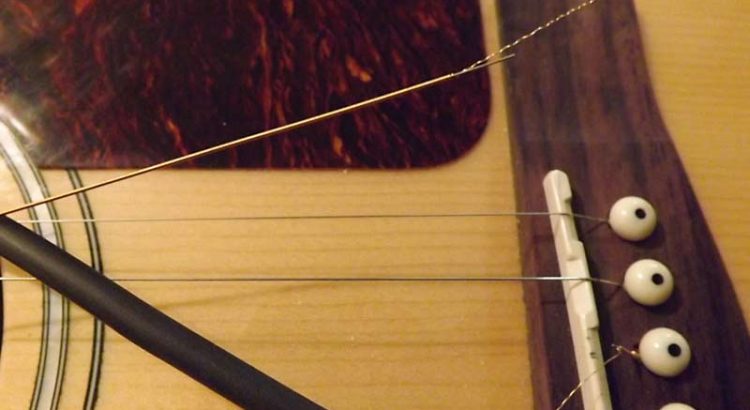Hello, fellow guitarists! How are you holding up? How is practise in lockdown holding up? For all those who used to point towards a paucity of time, now there is no reason.
But getting back to the issue, before we discuss it in detail, know that the G string is actually the thinnest string of all the six strings!
Don’t be fooled by its thickness. Underneath all those coils of copper or bronze lies a string thinner than your thin ‘e’ string, and so, it is most easily broken, given the slightest extra tension, or, if there is something out of the ordinary.
Out of the ordinary? Hmmm…what could that be?
Jump right in!
So, if you find yourself in that unenviable position where a particular string (or two) break(s) each time you change strings, it could be one of the two reasons:
A) Sharp edges of the tuning post hole

The tuning post is that part of the tuning machine that sticks above the headstock. It bears a hole through which you thread the string and then wind it. In cheap(er) instruments, the quality of tuning machines is cheap too and thus the overall finishing on them is far from satisfactory.
In such cheap tuning machines, the hole edges are not properly rounded, leaving sharp edges. When a string is wrapped through such a hole, it won’t break it immediately, but certainly as you tune it up.

The way to sort out the problem is with the help of a hobby file that can go through that tiny hole. My weapon of choice is a simple rat’s tail file. File out the edges of the hole on both sides and I doubt if you’ll ever break a string because of that.
B) Bad or improperly cut nut slots
Look carefully at the nut on your guitar.

If it looks anything like this, you will see that from the nut, except for the ‘E’ and the ‘e’ strings, the other four strings have a deviation in their track. They don’t run straight off the fretboard, onto the nut and into the tuning machine.
If the slots on the nut are improperly cut, or, the nut on your instrument has never been changed, chances are that you have found the reason why new strings break as you are tuning them up.
The strings, as they run through the slots of the nut, rub naturally through them. If there is any imperfection in the way these slots are cut, they are likely to cause very expensive problems.
To sort out the problem, it is best to go to a guitar technician and have the nut replaced. If you are comfortable doing it yourself, go right ahead. However, if you go to a proper guitar repairman, he/she will do a decidedly better job and quicker too.
If, however, you’re in love with the nut already on your guitar (c’mon man!!!!), a guitar repairman should be able to work the slots and smooth them out, again removing any sharp edges and corners.
The reasons why I choose to replace the nut and not work on it, are two: i) the cost of ‘repairing’ the nut could be almost as much as a new one. So, why not get a new nut?
ii) when a new nut is put in, naturally, everything is re-calibrated, in short, you get your instrument set up, which should get it playing the best that it can.
I don’t know whether you noticed or not but the reasons for string breakage deal with areas that the strings are constantly in contact with: tuning machines, the nut and even the saddle.
And so, the last thing that you want to look at is also the health of the saddle in your guitar.

Imagine deeper grooves in the saddle and the strings sitting in them. Not only is that reason for strings breaking, but such grooves can cause intonation issues too.
